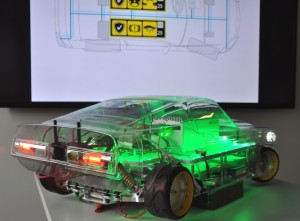Highly-automated driving presumes that vehicles can rectify problems on their own until the driver is able to intervene. It also requires an electronics system that can guarantee the fault tolerance of critical functions.
If an electronic control unit (ECU) fails in a highly-automated automobile, the vehicle must react on its own until the driver intervenes and takes over the driving again. Until that happens, the automobile must more or less continue to drive itself for several seconds. From a safety point of view, that essentially means the system must be fault-tolerant – or what industry professionals refer to as fail-operational.
 In this case, fault tolerance in the automotive electronics systems means the guaranteed availability of critical functions. Simple deactivation is no longer sufficient. In turn this means that the E/E (electric/electronics) architecture must be in a position to compensate for errors to a certain degree. However, this has to be applied to the entire system and not for each individual function, such as the steering and braking. The reasons lie on the one hand in better managing the complexity, and on the other in the overall lower costs that result from a system-wide approach to managing the numerous critical functions in the vehicle.
In this case, fault tolerance in the automotive electronics systems means the guaranteed availability of critical functions. Simple deactivation is no longer sufficient. In turn this means that the E/E (electric/electronics) architecture must be in a position to compensate for errors to a certain degree. However, this has to be applied to the entire system and not for each individual function, such as the steering and braking. The reasons lie on the one hand in better managing the complexity, and on the other in the overall lower costs that result from a system-wide approach to managing the numerous critical functions in the vehicle.
As part of the SafeAdapt project funded by the EU, researchers examined various methods and solutions for implementing fail-operational E/E architectures. Fraunhofer ESK made it possible to develop such architectures so that they can be implemented with different ECUs and heterogeneous technologies. This was accomplished by integrating ESK’s development tools into a toolchain that conforms to the standard. As a result, ESK researchers enabled the system to automatically create a fail-operational configuration and automatically generate the ECU software. Fraunhofer ESK is thus demonstrating for the first time an AUTOSAR-compatible solution for future E/E networks with fail-operational behavior, such as what is required to support future degrees of automation.
Source: Fraunhofer Institute